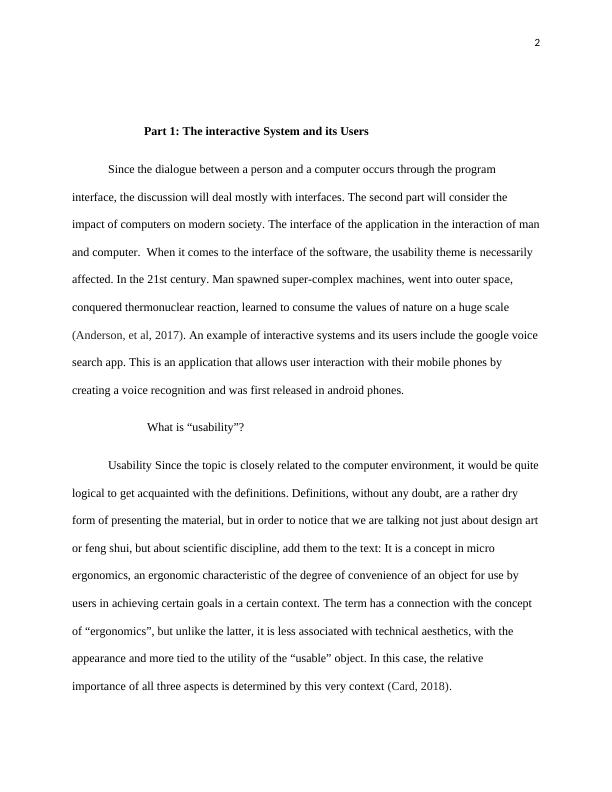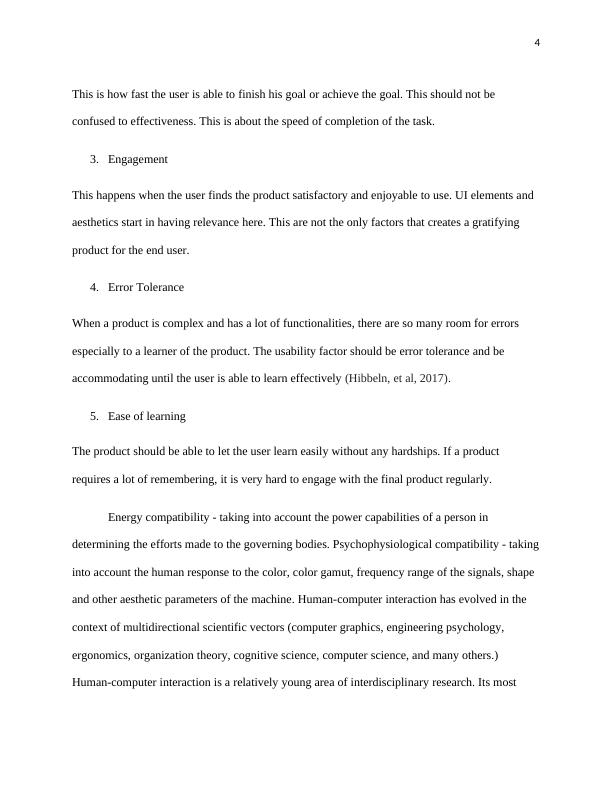The Impact of Human-Computer Interaction on Usability and Efficiency
14 Pages2852 Words137 Views
Added on 2023-04-07
About This Document
This document discusses the impact of human-computer interaction on usability and efficiency. It explores the concept of usability and its importance in the design of software interfaces. The document also covers the requirements for effective human-computer interactions and the evaluation methodology used to assess them.
The Impact of Human-Computer Interaction on Usability and Efficiency
Added on 2023-04-07
ShareRelated Documents
End of preview
Want to access all the pages? Upload your documents or become a member.
Human machine interface PDF
|12
|3962
|464
ADM80002 Work Systems in Manufacturing
|9
|1948
|61
Human Factor in System Design
|21
|5824
|341
Usability Assessment of an Interactive System
|15
|3994
|47
Role of Active and Latent Failures in Incident Causation
|16
|4756
|38
Heuristic Evaluation of Interactive Devices and Systems
|14
|2992
|147




